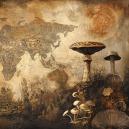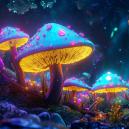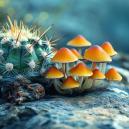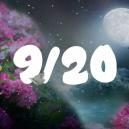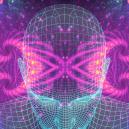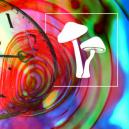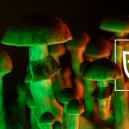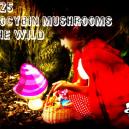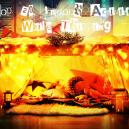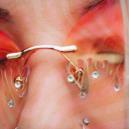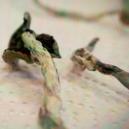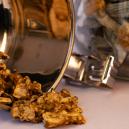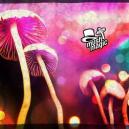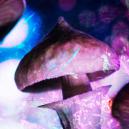LSD Art
Published : November 19th, 2018

LSD and psychedelic art is not just incredible to look at. It can certainly be commercially successful in the right talented hands. Guided by mental health professionals, it can also have profound therapeutic benefits for the individual.
LSD ART
LSD art is a sweeping term, just as art can include visual art, written art, musical art, performance art, and so on. LSD art and psychedelic art in general encompasses all these styles under its trippy wings.
Psychedelics as a class of compounds inevitably trigger a torrent of visual and aural effects. Heightened creativity, deep insights, profound and sometimes terrifying experiences, intensified colour perception, impossible geometries, and the morphing of shapes can all be experienced while under the influence.
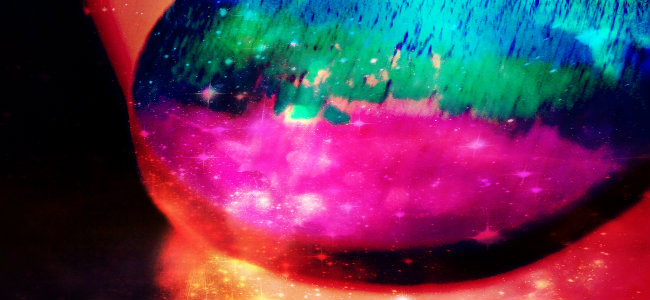
FROM BICYCLE DAY TO 60s PSYCHEDELICS
Since Albert Hofmann first synthesised LSD at the Sandoz labs in 1938, these observations, whether astute, horrifying, or simply confounding, have found their way into artwork—although not always admittedly so. There is little testimony from artists as to whether their artwork has been directly influenced by LSD, while a few artists unabashedly admit that their inspiration came from the psychedelic realm.
In essence, psychedelic art is really a description of aesthetic rather than works that are directly influenced by psychedelic substances. The visual impact that the psychedelic culture of the '60s and '70s had on art is still noticeable in contemporary works today. Even more so in digital art, with its infinite malleability and ability to access new colour spectrums. David S. Rubin’s book Psychedelic: Optical and Visionary Art Since the 1960s deals intimately with this subject.
BRAVE AND CURIOUS VANGUARDS
Artists who freely admit that LSD and other psychedelics played a direct and inspirational role in their work include Henri Michaux. The Belgian-born French visual artist and author was considered a pioneer in psychedelic art already in the 1960s. His most notable work Miserable Miracle published in 1956 included writings and drawings conceived while under the influence of mescaline. The Danish art historian Lars Bang Larsen describes Michaux’s work as “seismographic and pulsating, brut landscapes”.
The year Miserable Miracle was released, psychiatrist Humphrey Osmond coined the word “psychedelic” during correspondences with the author Aldous Huxley, whose book The Doors of Perception was released two years prior to Miserable Miracle. Even so, this still makes Michaux a proto-psychedelic artist well before “psychedelic” became the catchphrase of '60s counterculture.
PSYCHEDELIC ART AND LSD
It wasn’t until the mid-to-late ‘60s that psychedelic art became a recognised artistic expression of its own. Isaac Abrams was an early advocate of the psychedelic style. During an LSD session with the psychologist Stanley Krippner, Abrams’ visionary experiences gave him the inspiration for what psychedelic art should look like. Take for example his 1968 artwork Cosmoerotica, which exemplifies oceanic, cosmic, and microscopic motifs. He stays true to his original visions in his artwork to this day.
VISIONARY ARTISTS
Psychedelic art can also be termed “visionary art”. A number of visionary artists claim psychedelic experiences fuelled their work. This is covered in great detail by visionary artist Laurence Caruana in his book First Draft of Manifesto of Visionary Art. Caruana discusses psychedelics at great length, and their importance to the artistic process.
Probably the most well-known psychedelic artists of the digital era are Alex and Allyson Grey. Alex is a prolific painter whose art has been used on several music album covers, most notably for the band Tool. His 1990 book Sacred Mirrors: The Visionary Art of Alex Grey has been translated into a number of languages and is still in print today.
In the mid '70s, Alex experimented with LSD with his future wife Allyson. This significant experience was a pivotal moment in his career as an artist. Becoming interested in the study of consciousness, he began making drawings of what he had seen. Allyson’s experience was similarly profound, saying on her website Allysongrey.com that it “was to become the subject of our art for a lifetime”. Alex’s Godself and Allyson’s Language of Light are depictions of their visions. More recently, they are completing the building Entheon, where much of their original artwork will be displayed.
IT TAKES TALENT TOO
Psychedelic art is as much about talent as it is vision. The incredible microscopic detail integrated within macroscopic vision, combined with the elusive ability to give the impression of morphing forms in a static medium requires particular artistic talent.
As attested by Laurence Caruana, “As precise a rendering as possible is absolutely necessary for vision-inducing works. Fine lines, gradual transitions, infinite details—there is no limit to the pains endured nor the patience required to successfully render a vision into art form”.
That being said, it is doubtful that many artists make their art under the influence of psychedelic drugs. It is more likely the rendering of their visions and inspirations from memory after the fact or when coming down.
The San Francisco poster artist Victor Moscoso put it eloquently in a 2002 interview: “People ask me, ‘Did you draw on acid?’ Draw on acid? That’s like drawing while you’re tumbling down a flight of stairs. Are you kidding? With you dying and being re-born, having an understanding of the molecular structure of your body and of the cosmos at the same time. Drawing is absurd. You can’t do it! Whatever you draw will not come close to what you can see, or perceive”.
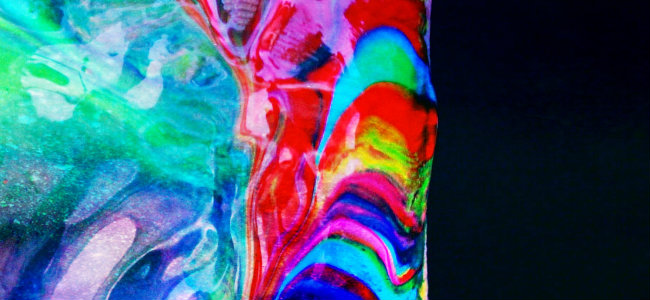
SOMETIMES ART ISN’T ART
With that truism in mind, psychedelic art certainly has a theme that runs through it. No matter who produces it. However, even when intentions are sincere and inspired by heartfelt experience, the results can often be epic fails when executed by the inexperienced layman. Although, some intriguing experiments with self-perception have been conducted while artists are under the influence of LSD.
LSD ART IN THE CLINIC
LSD art has been used as a therapeutic tool in clinical and experimental psychology environments. Dr. Oscar Janiger was an early pioneer who was intrigued by the relationship between psychedelics and creativity. He noticed that paintings produced while on LSD “had some of the attributes of what looked like the work produced by schizophrenics”. Janiger hypothesised that trained artists who took LSD could “ride his creative Pegasus” and “maintain a certain balance while riding the edge”. He coined the term “dry schizophrenia”, where an artist could control their surroundings and be crazy at the same time.
The bipolar artist Frank Murdoch underwent LSD art therapy in an effort to cure his late-stage alcoholism. Over several months, Dr. Janiger administered controlled experimental doses of LSD to Murdoch. He was then made to draw still lifes both on and off the drug.
This and similar studies from the '60s that included over 500 patients have recently been re-analysed using modern techniques. A study presented in The Journal of Psychopharmacology suggests that LSD as a mode for treating alcoholism is “as good as we’ve got”.
The study conducted at the Norwegian University of Science and Technology concluded that when treated with a single dose of LSD from 210–800 micrograms, there was a “significant beneficial effect” in controlling alcohol abuse that lasted for at least six months.
IT’S THE EXPERIENCE THAT MATTERS
LSD art can be astonishingly evocative when executed well. Being able to express inner emotion through any art form is a rare talent. Yet even the inexperienced artist can produce quality work that depicts their psychedelic vision. Those who aren’t able to produce fine art while tripping have no less a profound experience. It is the fascinating experience itself that is important, with a meta theme recognised by every psychonaut no matter how artistically inclined.


